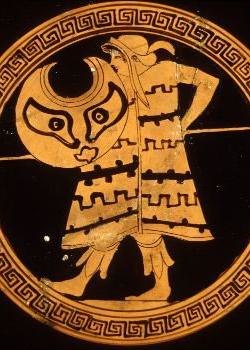History and types
The Thracians wore a tunic, a cloak called zeira (Ancient Greek: ζείρα), a cap called alopekis (Ancient Greek: αλωπεκίς) made from the scalp of a fox with the ears visible, [1] other Phrygian cap styles, and fawnskin boots called embades (Ancient Greek: εμβάδες). Thracian clothing was sometimes decorated with intricate patterns. Clothing was made from hemp, flax or wool. [4] The Dacians and the Getae wore pantaloons, which the Romans would later call braccae [5] (Ancient Greek: ἀναξυρίδες or θύλακοι).These loose pants were described in Euripides work as “variegated bags” (Ancient Greek: τοὺς θυλάκους τοὺς ποικίλους) and may have appeared highly ridiculous to the Greeks, although Ovid mentions the adoption of them by the descendants of some of the Greek colonists on the Euxine.These trousers were common in many nations.
Hellenistic era
The Thracians at Pydna in 168 BC wore black tunics. The Kausia (Ancient Greek: Καυσία) was adopted from the Macedonians. [6] Although many Thracian tribes began to incorporate Greek garbs to their fashion, they still largely retained their own styles of clothing. [7]
This page is based on this
Wikipedia article Text is available under the
CC BY-SA 4.0 license; additional terms may apply.
Images, videos and audio are available under their respective licenses.



